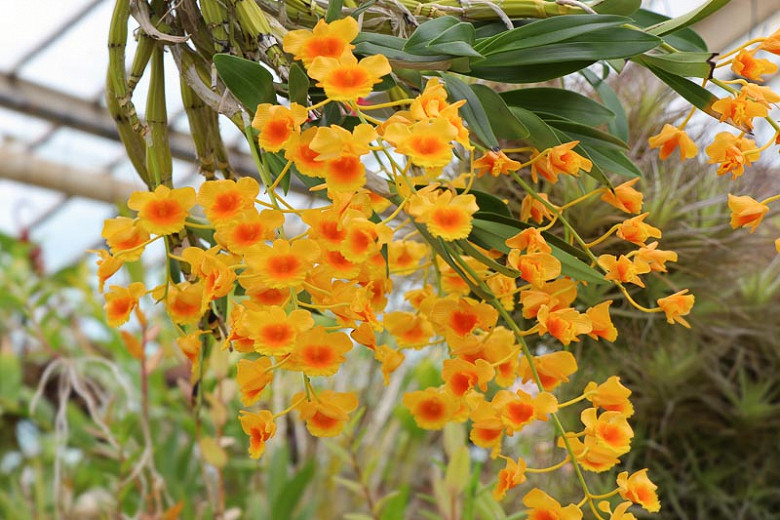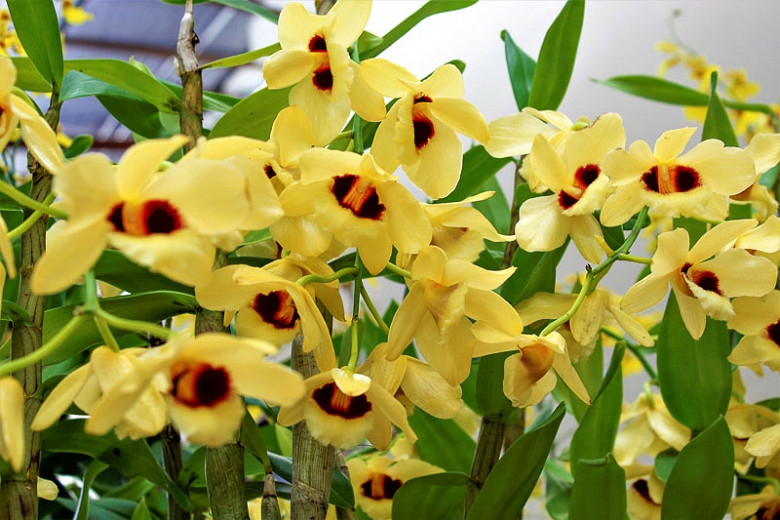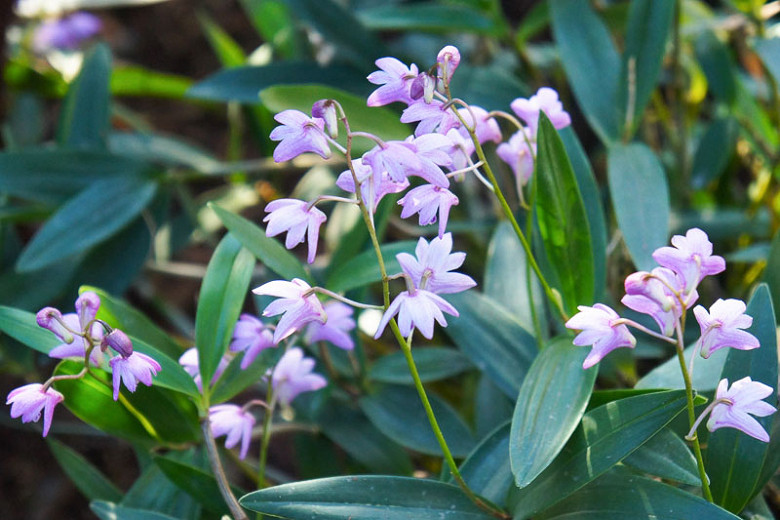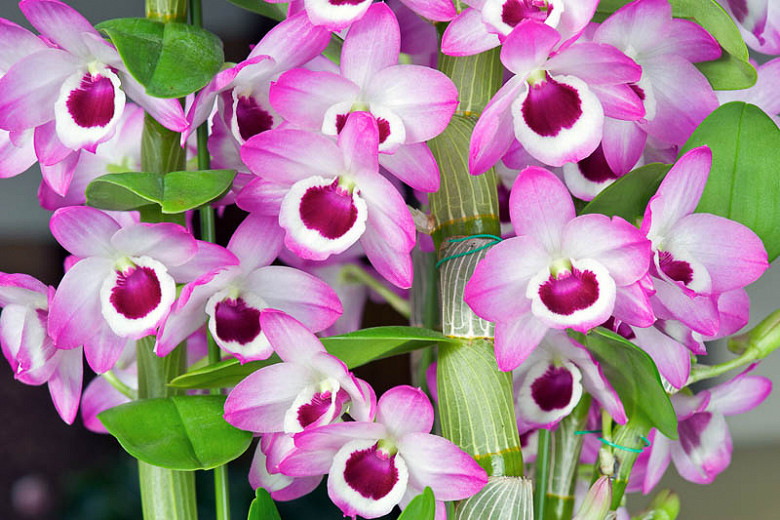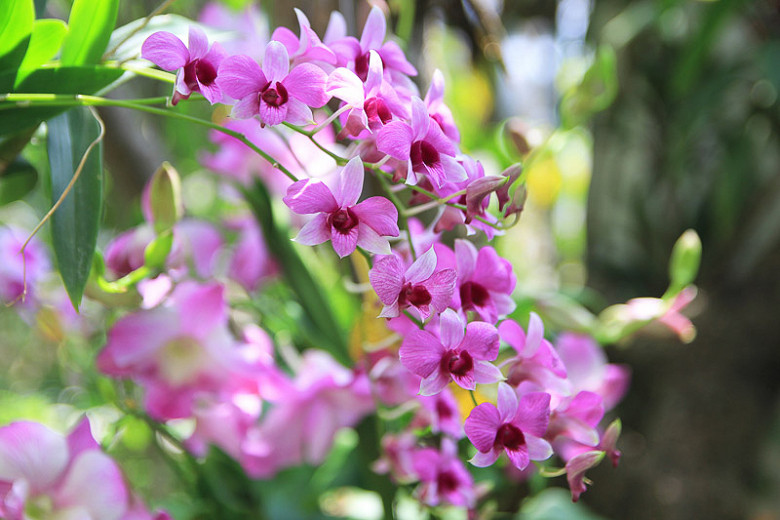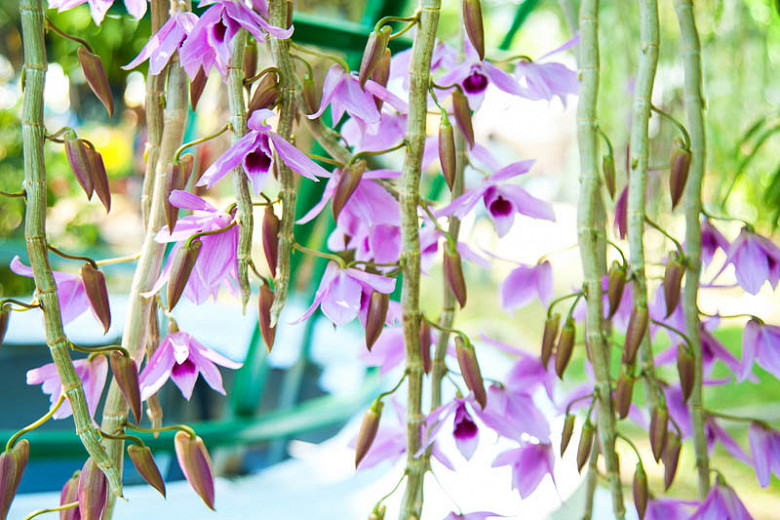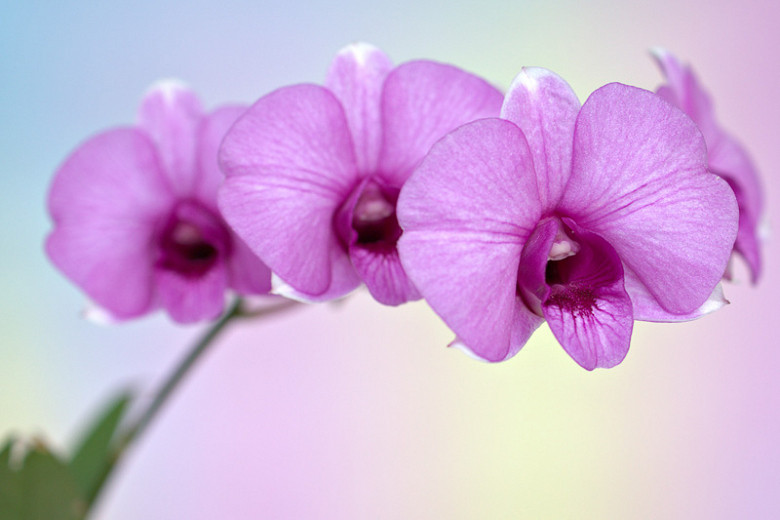Dendrobium lindleyi (Lindleys Dendrobium)
Dendrobium lindleyi (Lindley's Dendrobium) is a miniature to small-sized epiphytic orchid with short, thick, spindle-shaped pseudobulbs (stems), 2 in. long (5 cm), bearing a single, leathery leaf. The thick, elliptical leaves, 1-3 in. long (2-7 cm), are evergreen. Blooming in winter and spring, the plant produces wonderful showers of golden flowers. Borne on arching to pendant racemes, 4-12 in. long (10-30 cm), each blossom, 1 in. across (2.5 cm), features a flat face with rounded petals that are bright golden with a darker lip. Lasting a week to a month, the flowers exude a slight honey-like fragrance which is most pronounced in the early morning and early evening. Native to Southeast Asia, Dendrobium lindleyi usually grows on the branches of trees that lose their leaves before the winter. This orchid can be successfully grown at home as long as there is a bright space that remains cool in winter. It is well-suited to being mounted on bark or cork where sufficient humidity can be maintained year-round. Otherwise, it adapts well to a pot large enough to accommodate the root ball.
- Grows up to 4-8 in. tall (10-20 cm).
- Grows in a loose, fast-drying substrate in very bright indirect light with excellent good ventilation. It is possible to grow this species on a sunny window sill.
- Needs a minimum night temperature of 66-68°F (19-20°C) and a daytime temperature of 78-82°F (26-28°C) in summer.
- Needs a minimum night temperature of 53-66°F (12-19°C) and a daytime temperature of 86-87°F (30-31°C) in spring.
- Needs a minimum night temperature of48-50°F (9-10°C) and a daytime temperature of 77-82°F (25-28°C) in winter.
- Maintain high humidity (80-85% in summer, 60-65% in winter).
- This plant should be kept constantly moist during the growing season.
- Dendrobium lindleyi needs a dry resting period during the winter months. It must be exposed to moderately low temperatures, 50°F (10°C), to induce flowering. Maintain high light during this period and reduce watering to just enough to keep the plant from shriveling. Fertilization should be eliminated until spring when more watering is undertaken. Begin watering again once the flower buds appear.
- Feed once a week from spring to mid-summer with a high nitrogen fertilizer. Then use a high phosphorus fertilizer until the end of the fall.
- Cut off faded inflorescences once they are dried up.
- Can be divided when clumps outgrow their container, but each division should have 5 to 9 pseudobulbs.
- Repotting should be performed as rarely as possible, but it must be done before the substrate begins to decompose.
- Generally disease free. Keep an eye out for aphids, glasshouse red spider mites, and mealybugs.
- Native to Southeast Asia, including Sikkim, Bhutan, north-east India, Burma, Thailand, Laos, Vietnam, and southwest China.
Tip for reblooming
- If a plant is healthy but does not produce flowers in a reasonable time, then increase the light, and your orchid should get back on track blooming regularly.
Requirements
| Hardiness | 9 – 12 |
|---|---|
| Plant Type | Orchids |
| Plant Family | Dendrobium – Orchids |
| Exposure | Partial Sun |
| Season of Interest | Spring (Early,Mid,Late)Winter |
| Height | 4" – 8" (10cm – 20cm) |
| Water Needs | Average |
| Maintenance | Average |
| Soil Drainage | Well-Drained |
| Characteristics | Fragrant, Showy, Evergreen |
| Garden Uses | Patio and Containers |
